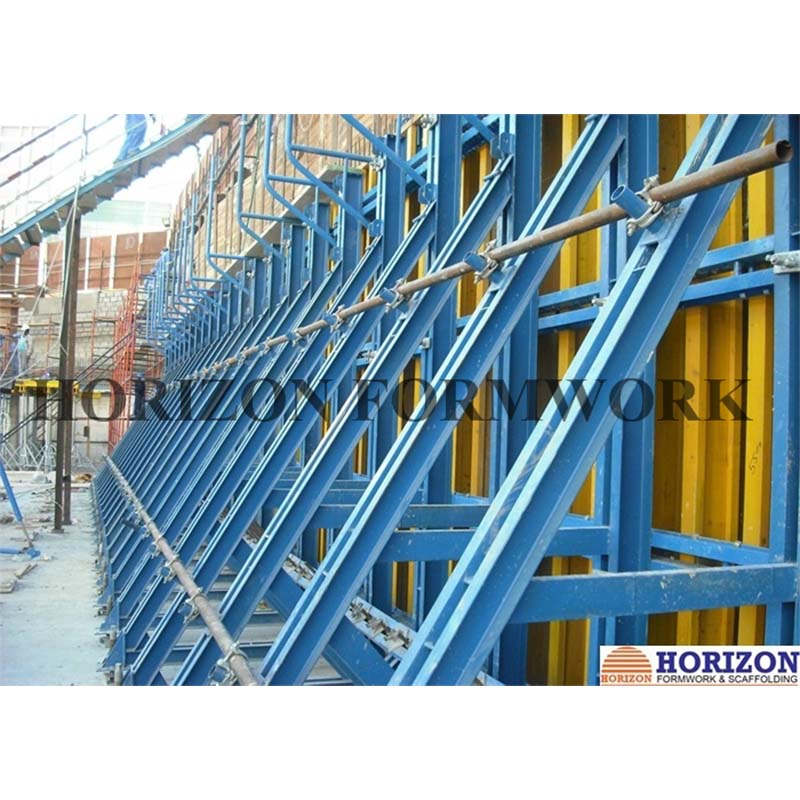Dec . 04, 2024 09:49 Back to list
Innovative Self-Climbing Formwork System for Efficient Construction in China
The China Self-Climbing Formwork System Innovation in Construction
The construction industry is continuously evolving, driven by the need for efficiency, safety, and sustainability. One such innovation that has emerged from China is the self-climbing formwork system. This advanced technology offers significant benefits over traditional formwork methods, making it a game-changer in the realm of high-rise buildings and complex structures.
What is the Self-Climbing Formwork System?
The self-climbing formwork system is a construction method that utilizes a modular scaffolding system capable of ascending vertically with the construction progress. Unlike traditional formwork, which requires external cranes or manual labor to reposition, the self-climbing formwork rises independently, often using hydraulic systems or mechanical devices. This self-sufficient mechanism significantly reduces downtime and enhances productivity on the job site.
Advantages of the Self-Climbing Formwork System
1. Increased Efficiency One of the primary benefits of the self-climbing system is its ability to enhance project timelines. By eliminating the need for disassembly and reassembly of formwork at various heights, construction teams can save valuable hours during the building process. This efficiency is particularly beneficial for high-rise developments, where traditional formwork methods can be time-consuming.
2. Enhanced Safety Safety is a critical concern in any construction project. The self-climbing formwork system minimizes the risks associated with manual handling and adjustments at height. Workers are less exposed to hazardous conditions, reducing the likelihood of accidents and injuries. Additionally, this system can be designed to include safety features, such as guardrails and harness attachment points, further protecting workers.
3. Improved Quality With a modular approach, the formwork system allows for greater precision and a more uniform finish. This consistency in construction translates into higher quality structures, with fewer defects. The self-climbing system can easily accommodate various design specifications and adapt to complex architectural features without compromising integrity.
china self climbing formwork system

4. Cost-Effectiveness Although the initial investment in a self-climbing formwork system may be higher than traditional methods, the long-term savings outweigh the costs. Reduced labor expenses, decreased material waste, and minimized equipment rental fees contribute to a more cost-effective construction process. Projects can also experience a quicker return on investment due to shorter completion times.
5. Flexible Design Options The modular design of self-climbing formwork allows for flexibility in various construction projects. Builders can adjust the configuration to suit specific architectural designs or project requirements. This adaptability is invaluable in modern architecture, where unique shapes and forms are increasingly common.
Global Reach and Future Prospects
While the self-climbing formwork system originated in China, its applications are now being recognized globally. As construction companies around the world strive to adopt innovative technologies, the demand for self-climbing systems continues to grow. Countries facing rapid urbanization and high construction demands are particularly ripe for this technology.
Looking to the future, advancements in technology may further enhance the capabilities of the self-climbing formwork system. Integration with Building Information Modeling (BIM) could lead to even greater efficiencies, as real-time data will allow for adjustments and improvements throughout the construction process. Additionally, ongoing research into materials and hydraulic systems might result in lighter, stronger, and more adaptable formwork solutions.
Conclusion
The self-climbing formwork system represents a significant leap forward in construction technologies. With its numerous advantages—including increased efficiency, enhanced safety, improved quality, cost-effectiveness, and design flexibility—this innovative approach is shaping the future of high-rise building construction. As the industry continues to embrace advanced methodologies, the self-climbing formwork system will undoubtedly play a crucial role in meeting the challenges posed by modern architecture and rapid urbanization. By investing in such technologies, construction firms can not only improve their project outcomes but also contribute to a safer and more sustainable built environment.
-
High-Quality U Head Jack Scaffolding – Reliable Scaffolding Jack Head Manufacturer & Factory
NewsJul.08,2025
-
High-Quality I Beam H20 Leading Timber Beam H20 Material Factory, Exporters & Manufacturers
NewsJul.08,2025
-
High-Quality Powder Coating Steel Formwork - Durable & Corrosion Resistant Solutions
NewsJul.07,2025
-
Inclined Column Formwork Supplier – Durable & Precise Solutions for Unique Structures
NewsJul.07,2025
-
High-Quality Water Stop Solutions Trusted Water Stop Company & Suppliers
NewsJul.07,2025
-
High-Quality Formwork Material Supplier Reliable Manufacturer & Factory Solutions
NewsJul.06,2025